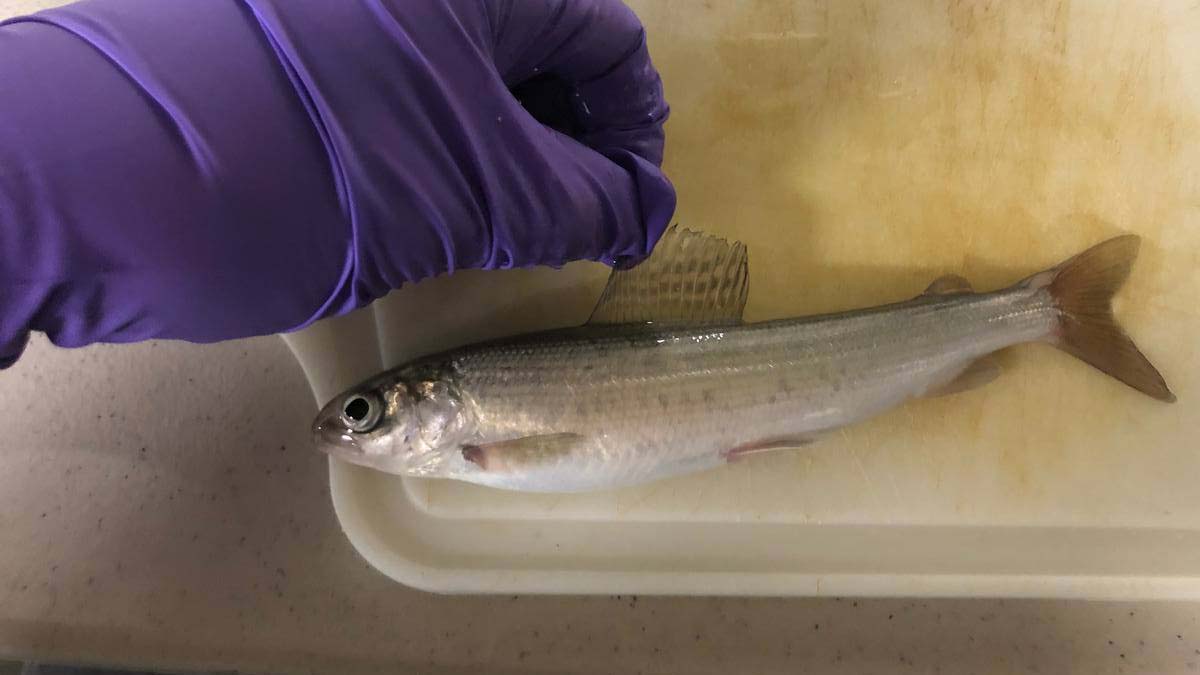Saving Grayling
November 01, 2023
A University of Idaho-led research team is working to save the last native population of Arctic grayling in the nation’s Lower 48 States from the threat of warming water temperatures.
Previous research by Montana Fish, Wildlife and Parks has shown environmental factors including climate change and the loss of riparian habitat have warmed Montana’s Big Hole River drainage — home to the final stronghold of native Arctic grayling in the contiguous states — to the point that summer afternoon temperatures are now stressing the fish.
Through four related studies, the U of I scientists aim to understand how chronic and short-term stress caused by warming water temperatures affect grayling health, physiology and survival. They’re also using genetic sequencing analysis to develop a strategy for raising hatchery fish better suited to withstand warmer summertime peak water temperatures when released in the wild.
The research team includes Alonso Longoria, a U of I doctoral student studying animal physiology, Matt Powell, a professor at U of I’s Aquaculture Research Institute based at the Hagerman Fish Culture Experiment Station, and Gibson Gaylord, a physiologist with the U.S. Fish and Wildlife Service’s Bozeman Fish Technology Center. Lukas Andrews, a former U of I undergraduate, contributed to the project last summer, which he spent in Hagerman analyzing grayling enzymes to assess their stress levels.
“The temperatures in the Big Hole River are reaching critical levels for Arctic grayling. It is important to advance this research and see what is the limit,” said Longoria, who is using the project as his doctoral thesis. “It’s a genetically distinct population.”
The team started work on the first of the studies, assessing grayling response to chronic stress, in the summer of 2021, conducting fish experiments at the Bozeman Fish Technology Center and performing genetic analysis of grayling tissue samples in Hagerman.
For the chronic stress research component, groups of juvenile fish, known as fry, originating from the watershed were kept for 145 days at 10 different constant temperatures, ranging from 46.4 degrees to 78.8 degrees. Fish growth increased up to 64.4 degrees and decreased at higher temperatures. The researchers found 59 degrees was the optimal temperature for grayling wellbeing. Fish began to die off, however, at 75.2 degrees and above — all the fish reared in 78.8-degree water died after 22 days. The chronic stress data will be published soon in the journal “Transactions of the American Fisheries Society.”
In the summer of 2022, afternoon mean water temperatures in the Big Hole River reached a record 77.54 degrees. Cooler water temperatures throughout the remainder of the day enabled the fish to survive, but the researchers believe the short-term, acute heat stress has caused them harm. Beginning next spring, they plan to test how grayling fry respond to acute stress, simulating intervals of excessively warm water temperatures mimicking the Big Hole River.
The researchers hope by exposing hatchery grayling fry to constantly warm temperatures, they will induce epigenetic changes that will help those fish survive upon being released. Epigenetics is an emerging research area delving into how environmental stressors can affect gene expression.
Through epigenetic changes, the researchers believe grayling can adapt to withstand somewhat warmer temperatures in a relatively short timeframe and can also pass along the adaptive trait to offspring. Furthermore, hatchery grayling exposed to constantly warm water temperatures may have an epigenetic advantage over the Big Hole’s resident grayling, which endure only periodic intervals of heat stress.
“What we’re trying to do is employ a strategy called adaptive management,” Powell said. “If the river warms up, perhaps we can adaptively manage fish for a little bit of a warmer river. It makes no sense to put hatchery fish raised in a cold-water management system into a river where they’re going to die.”
Fish for the project were donated by Montana Fish, Wildlife and Parks. The U.S. Fish and Wildlife Service contributed about $50,000 toward the genetic research component.
For his involvement in the project, Longoria was awarded a research scholarship from Wilbur-Ellis Co. covering a full year of tuition.

About the University of Idaho
The University of Idaho, home of the Vandals, is Idaho’s land-grant, national research university. From its residential campus in Moscow, U of I serves the state of Idaho through educational centers in Boise, Coeur d’Alene and Idaho Falls, nine research and Extension centers, plus Extension offices in 42 counties. Home to nearly 11,000 students statewide, U of I is a leader in student-centered learning and excels at interdisciplinary research, service to businesses and communities, and in advancing diversity, citizenship and global outreach. U of I competes in the Big Sky and Western Athletic conferences. Learn more at uidaho.edu.






